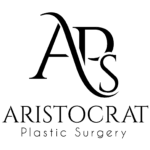By Dr. Krishna Vyas, M.D., Ph.D., M.H.S.
Dermal fillers
As we age, our faces naturally lose subcutaneous fat. The facial muscles are then working closer to the skin surface, so wrinkles become more apparent. Dermal filler or fat injections can be used to diminish facial lines and to restore volume in the face, helping patients to achieve a full, smooth, and youthful facial contour. Sometimes we use fillers to correct facial asymmetry, or to enhance facial features (e.g., lip injections or “liquid rhinoplasty”). Many fillers consist of hyaluronic acid, which acts as a direct filler (volume enhancer). Examples include Juvederm® and Restylane®. Sculptra® is a synthetic dermal filler and stimulator (poly-L-lactic acid) which helps to stimulate collagen production (and therefore can take several weeks for effect). A typical filler treatment requires only topical anesthesia and can be performed in-office within a few minutes and there is no downtime. Results can be expected for 6 months to 1 year. Since fillers need to be repeated and can be safely dissolved, patients have the opportunity to try different amounts and variations of fillers, and make informed decisions about what looks and feels best.
Fat Grafting/Transfer as an alternative to dermal filler injections
Fat transfer is a filler that provides safe, soft, supple, and natural results. Fat is easily harvested from areas of unwanted fat excess such as the abdomen or thighs using liposuction. The fat is then processed and re-injected into areas of the face. This can be performed in the office under local anesthesia or with sedation. Fat has the benefit of being autogenous, abundantly available, easy to harvest, and lacks potential side effects associated with synthetic fillers or implants. Furthermore, stem cells within fat may lead to improved tissue quality. The fat that survives the injection process becomes living tissue that provides lasting results that cannot be obtained with other fillers. While the majority of the fat will survive during transfer, there is variability to the percentage of “take.” While the short term costs of fat grafting are higher, the long-term costs associated with maintaining the volume are less with fat grafting compared to hyaluronic acid fillers. Fat grafting is also associated with a longer downtime due to a higher risk of bruising and swelling. What can these treatments do for you?
- Enhance shallow contours
- Soften facial creases and wrinkles (such as smile lines around the mouth, frown lines between the eyebrows, marionette lines at the corners of the mouth).
- Improve the transition between lower eyelids and cheek
- Improve the appearance of scars
- Add volume and improve shape of lips, cheeks, jawline, chin
Dermal filler injections VS Fat grafting: Which is right for you?
The decision to use fat or filler requires an individualized assessment based on your goals. Your surgeon will explain the best type and volume of filler needed for your particular areas of concern. We are happy to answer any questions you may have about the process. It is important that you address all your questions directly with your surgeon, including risks and benefits. Because significant complications can occur from these procedures, it is important to be in the care of an experienced provider who understands facial anatomy and is trained and prepared to deal with any complications that may occur. If you are new to the world of aesthetic medicine, we recommend looking at a combination of dermal filler and neuromodulator injections. Neuromodulators (like Botox, Xeomin or Dysport) are used to relax certain facial muscles to address dynamic wrinkles. When used in conjunction, dermal filler and neuromodulator injections can give you a noticeably refreshed look.
In September we are running a promotion on injectables: you can save 30% on Radiesse (which is a dermal filler) and/or Xeomin (which is a neuromodulator). Contact us for more information and to schedule your appointment with one of Aristocrat’s skilled injectors!

